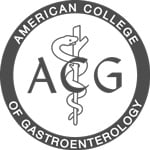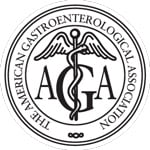Not long ago, being diagnosed with celiac disease was a lifetime sentence of extremely limited choices. Gluten-free breads and pastas were rare and pricey, and going out to eat at restaurants meant not only explaining your allergy but likely being relegated to the salads or, if you were lucky, a soup or two.
Thanks to the growing popularity of gluten-free diets, vast improvements upon gluten-free food products, and a growing understanding of the bodily mechanics behind celiac flare-ups, living with celiac disease is easier than ever.
What is celiac disease?
Celiac disease is a lifelong, genetically inherited autoimmune disorder that when triggered, causes the body to attack itself, damaging the lining of the small intestine and preventing proper absorption of nutrients.
The trigger for celiac is gluten, a protein responsible for the elastic (chewy) texture of certain grain-based foods. Gluten is also present in some medications and cosmetics. When someone with celiac ingests gluten, they may experience the following symptoms:
- Diarrhea
- Bloating, Gas & Abdominal Pain
- Nausea
- Fatigue
- Weight Loss
- Anemia
- Joint Pain
- Dermatitis
- Loss of Bone Density
Celiac disease is a permanent condition with no known cure. That means a lifelong immune reaction to anything with gluten, whether it be wheat, rye, oats (which are naturally gluten-free but oftentimes are contaminated with gluten during harvest and processing), barley, or certain medicines, vitamins, and cosmetics.
The only way to treat celiac disease is to follow a gluten-free diet.
Gluten is in a lot of foods, including some unexpected sources, such as salad dressings, sauces, soups, beer, food coloring, and malt. Going gluten-free is easier than ever, however, which means you can protect your health while also enjoying a wide variety of foods.
Gluten-free substitutes are your friends—and easier to find than ever before.
Gluten-free breads and pastas were once only found in specialty health stores. Now, nearly every supermarket carries these. The gluten-free product market is currently valued at $9.14 billion per year, and projected to grow to $43.65 billion by 2027, which means more choices and cheaper products for people with celiac.
National companies such as Bob’s Red Mill, Blue Diamond, General Mills, Barilla, Quaker, and more now offer gluten-free options, and specialty companies including Glutino, Authentic Foods, and Canyon Bakehouse are now in stores nationwide.
Those seeking gluten-free products can also look for U.S. Food & Drug Administration (FDA) labels indicating as much. You can also find plenty of gluten-free recipes online and in publications like GFF Magazine or Gluten-Free Living magazine.
You don’t have to eat as many grains as you were told growing up.
The foundation of the U.S. Department of Agriculture (USDA) food pyramid is, somewhat infamously, composed of grains. Pasta, bread, pretzels, cereals, bagels—if you were to take the word of the extremely popular guide, released in 1992, you’d think you needed six to 11 servings per day to have a balanced diet. Now, according to updated USDA guidelines, you should aim for more like five.
Not only is the recommended amount of grains half of what experts long believed it should be, there are plenty of extremely healthy, gluten-free grains for people with celiac disease to enjoy.
You can get your daily servings from quinoa, which is a good source of protein and contains all essential amino acids (unlike other plant-based proteins), or buckwheat, which may help reduce risk of heart disease. Both are plentiful in any grocery store.
You can still eat out at restaurants when you have celiac.
Plenty of restaurants have gluten-free alternatives now; a simple Google search will identify these if you’d like to dine out. Or you could call the restaurant (during slow times, i.e., not during lunch or dinner rush) to ask if they have a gluten-free menu or any gluten-free options. Additionally, the nonprofit National Celiac Association hosts a nationwide directory of gluten-free restaurants and bakeries.
When you arrive at the restaurant, if they’re not strictly gluten-free, make sure to alert your server to the fact that you have celiac and absolutely cannot have any food containing gluten. Now that celiac disease is broadly recognized across the country, you should have little difficulty finding delicious, gluten-free meals.
If you have celiac disease, Gastroenterology Associates specializes in helping restore you and your family to optimal digestive health. We are conveniently located adjacent to Long Island Center for Digestive Health (LICDH), a non-hospital outpatient facility committed to providing high-quality services. Schedule your consultation, today.












